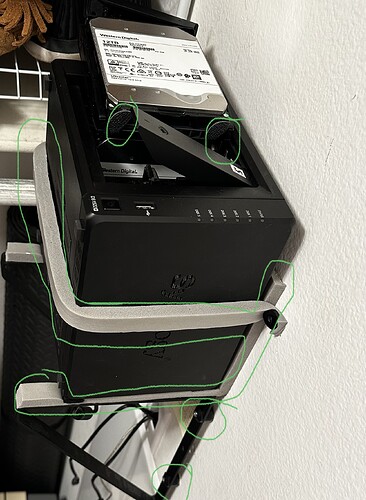I have seen Will recommend a read-only SSD cache. I wondered if it would be beneficial to combine an SSD cache with allowing the hard drives to sleep after the shortest allowed idle time. My server right now has a very light work load and my question is, if most of the data that it serves (apps) is stored on the SSD cache, will the hard drives not need to spin up as often? Or will they just spin up anyway to ensure that the data on the cache isn’t stale? I’m hoping for the former answer, to reduce HDD clacking noise (can be heard through the walls) and reduce total powered-on hours of the drives. This isn’t something I can really test myself. Opinions are welcome if facts can’t be had.
So HDD sleep is a tricky thing. From my experience (this is non scientific, just what I have seen) having drives hibernate and spin up often shortens their life span. Especially in something like a NAS where they really dont get to sleep for a long period of time.
If SSD caching was able to really pull everything into the SSD’s and never go to the HDD’s unless there was a user calling data then I think your solution would work. But unfortunately SSD caching does not seem to get everything that the OS needs to never wake up from sleep. SSD caching only takes random IO, so it leaves anything sequential on the drives
OK so my idea isn’t feasible on DSM anyway. According to this article, an SSD cache contains only the user’s data (which includes packages), not the system files.
So I’ll need to hand craft a sound isolating bracket. Part of the problem is that I have the NAS mounted on the closet wall. It’s nice and tidy and great for cooling but it directly transmits vibrations through the frame of the house. Anyone have a recommendation for vibration dampening mechanisms?
A piece of the “loop” half of peel-and-stick Velcro under each drive bay is surprisingly helpful at reducing some of the noise.
I think I know what you mean but it sounds like I might risk the sata connector not making full contact. Do you have a photo of how you did it?
I like the 1mm foam tape on the sides. I might also try some very thin med-density foam weatherstripping on the backs of the drives too, to replace the squishy rubber feet i have there now. I think this part matters because I have my NAS mounted vertically, fans and Ethernet ports facing down. This keeps the wires tidy, the air flow unrestricted, and all important sides accessible for reconfiguring.
Right now the NAS is resting on soft weather stripping, which is a bit like memory foam. After a few months it completely collapsed into a very thin, dense layer which had no vibration absorption qualities any more. But it does work very well when the weatherstripping is new. Here’s a photo of what I did back in January.
That being known, I want to find a version of these vibration / shock mounts that are made with medium density foam with a 4-lb crush force rating, instead of rubber.
https://www.amazon.com/gp/product/B07PDY7VGX/
I did notice an improvement with some of the harsher “knocking on the wall” sound after I removed a smaller, older mismatched fourth drive from the array last week (now there are only 3 drives and they are the same age and model and size), but if I want to fill the remaining 2 bays, I suspect the noise level would go back up even with exactly matched drives.
A fair amount of research has gone into it @Will , and it’s because computer parts don’t like being hard power cycled, and they especially don’t like cooling down for hours and then turning back on and having the heat expand and constrict the metal over and over.
The best thing is to just leave everything running 24/7 if possible and NAS systems are designed for this so sleep mode and/or powering them off and on frequently isn’t good for them.
